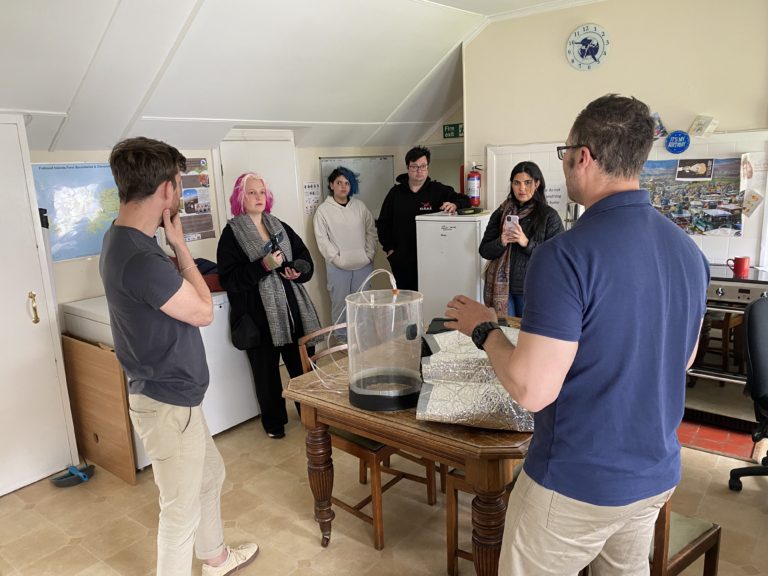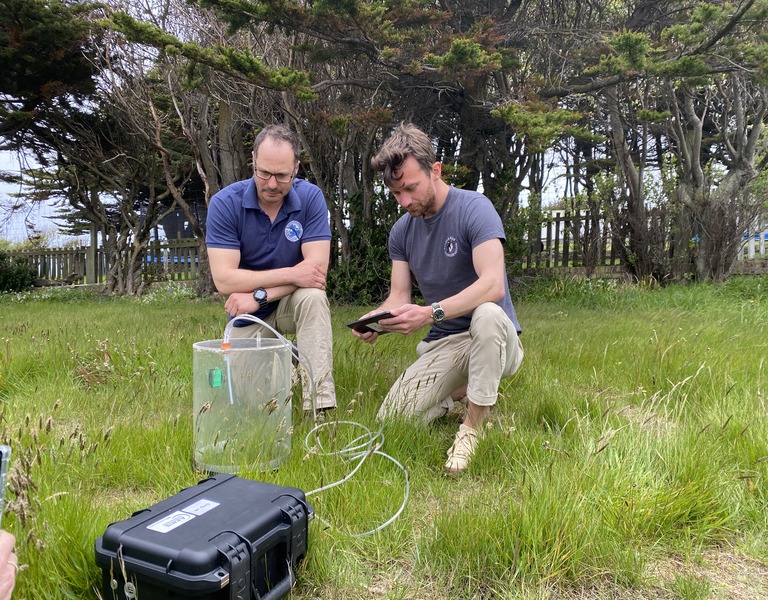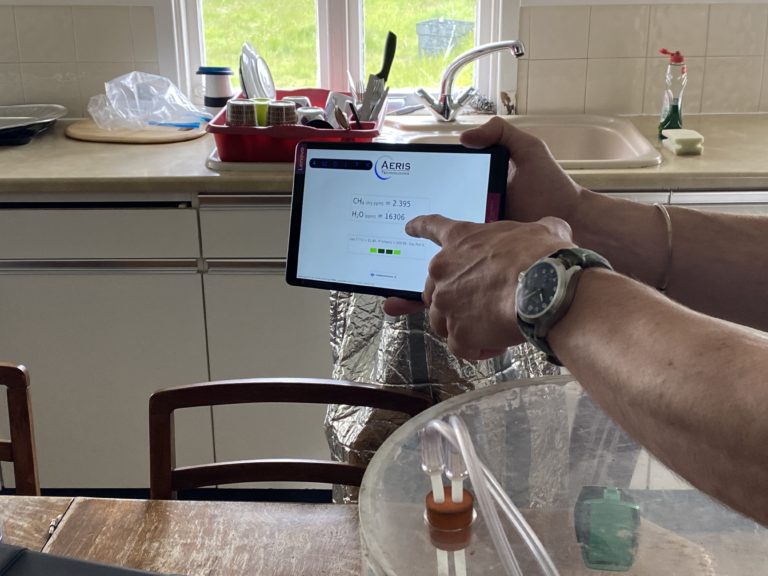

‘Public, meet our Peatland Project’
1st DECEMBER 2023 – Dr Ben Taylor, Project Lead
On Friday, Falklands Conservation (FC) and the South Atlantic Environmental Research Institute (SAERI) demonstrated one of the pieces of equipment which the project will use. Members of the local press, including Penguin News, Falkland Islands Radio Station and Falkland Islands Television attended to gain a better understanding of the new project, of which Falklands Conservation is leading.
Peatlands can sequester and store incredible amounts of carbon and afford large climate change mitigation benefits, however, they can also to drive climate change if environmental factors lead to the breakdown of previously ‘locked-away’ carbon. At present, little is known about how the peatland habitats of the Falklands contribute to climate change (for better, or worse) – but with this project, we’re working to change that.
The project’s long title ‘Improving Falkland peatland GHG data: understanding carbon sequestration and offsetting feasibility’, captures the goals that we are hoping to achieve over the three-year investigation. One of those goals is to understand the rate at which peatland habitats (starting with tussac and white grass) emit or sequester carbon. This data, along with other environmental measurements, will allow the production of an informed estimate of GHG emissions from these habitats across the Falklands Islands. Important information for inclusion in our national carbon accounting and to understand our role at an international level in tackling this global issue.

Members of the local press observe gas flux chamber demonstration.
During Friday’s demo with the press, Dr Al Baylis (of SAERI) and I aimed to showcase how we plan to collect this important data. We demonstrated one of the pieces of equipment that we would be using for our fieldwork and explained how they would work.
The equipment demonstrated forms part of a GHG flux chamber system which sees a plastic chamber placed onto the ground, sealing the sampling area at the soil surface. Tubes carry gases from the chamber to the sampling unit and back to the chamber, allowing for constant measurements to be taken as gas cycles through. The unit demonstrated analyses the air using lasers and light absorption properties to quantify concentrations of target gases.
The project uses two similar units, which together provide data on carbon dioxide (CO2), methane (CH4), nitrous oxide (N2O) and water vapour – all important GHGs. During sampling the clear chamber will be covered by varying levels of shade to simulate different light exposures that the vegetation would experience, at all stages measuring how concentrations of GHGs change.

Dr Ben Taylor shows device that is used to measure gas concentrations within the flux chamber.
The brief introduction to the equipment and what it will look like during deployment gave attendees the opportunity to see and interact with the science first-hand. The unit was first discussed indoors with the demonstration then moving outside to illustrate it application in the field whilst linked to a chamber.
Engagement is always a vital part of conservation efforts, and this is no less true than for this project – which the demonstration hoped to facilitate by providing direct access to the work which will be undertaken and encouraging discussion. Connecting with land-owning stakeholders, government and the wider community is important to facilitate the exchange of knowledge and understanding as the project progresses. Such exchange will provide valuable insight for future developments and help ensure they are relevant and fit for purpose in the Falkland Islands.
Next steps for the project will be the continued implementation of a GHG chamber network across the Islands and the installation of four GHG flux towers (also measuring carbon emissions). Come back and in early 2024 to hear more.
WATCH HERE for more information on the project and events on the day.



